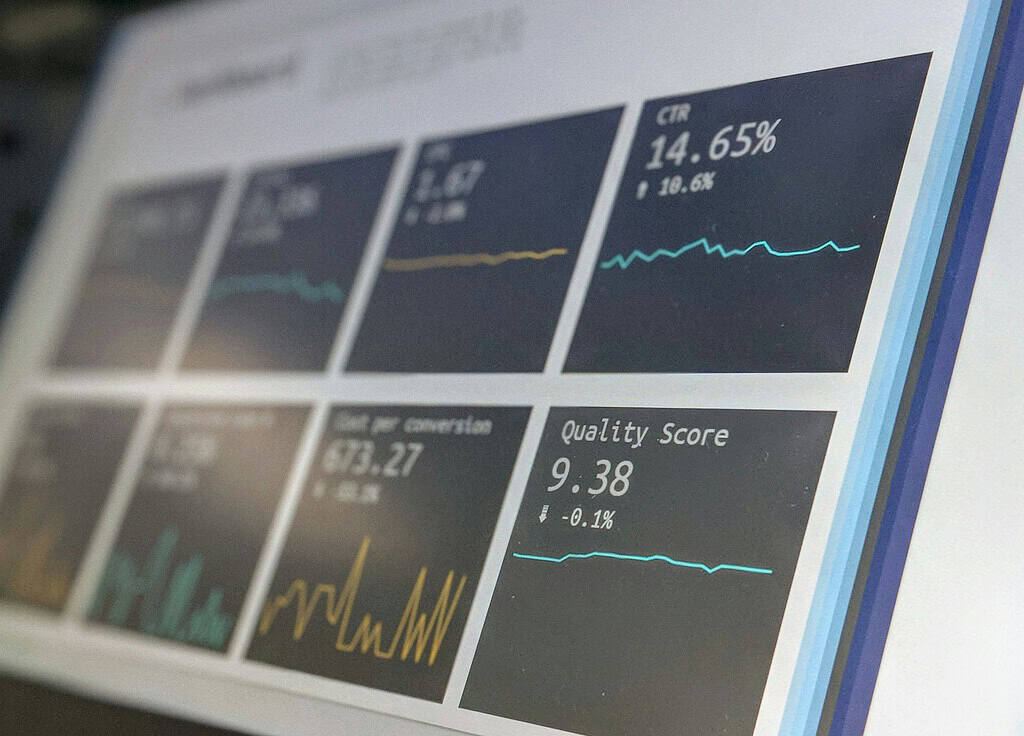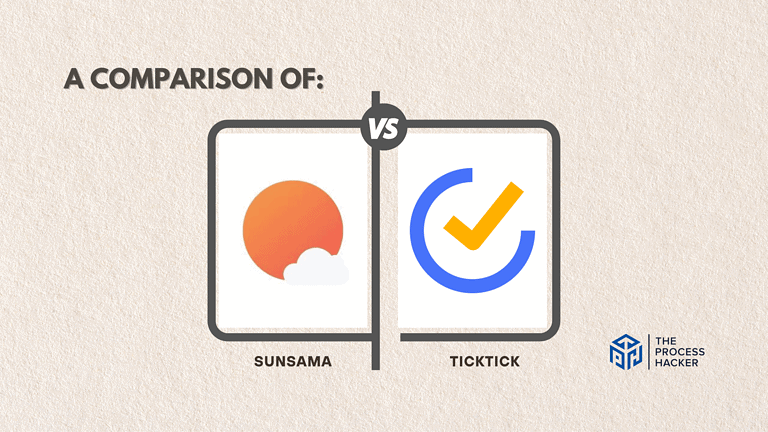80-20 Rule in Business: How to Optimize Your Business & Life Using the Pareto Principle
Attention all entrepreneurs, small business owners, and hardworking individuals looking to maximize their productivity and success!
Are you tired of constantly working harder but not seeing the desired results? Do you wish there was a simple yet effective method for optimizing your business efforts?
Look no further because we have the solution for you: the 80-20 rule, also known as the Pareto Principle. In this blog post, we’ll explain this principle and show you how to apply it to your work to achieve exponential results.
Get ready to work smarter, not harder, with our guide on utilizing the 80-20 rule in your business strategy!
What is the 80-20 Rule (Pareto Principle)?
Popularized in the book by Richard Kock, “The 80-20 Principle” or Pareto Principle states that about 80% of the results (outputs) come from about 20% of the causes (inputs).
When examining systems or businesses, a minority of elements or people generate much more impact than a majority of elements or people. This principle shows that a system’s inputs and outputs have an unequal and unbalanced relationship.
Note that this is not a hard-and-fast mathematical rule but empirically follows from the power-law distribution (or Pareto distribution) for a certain set of factors.
Origins of the 80-20 Rule: Italian Economist Vilfredo Pareto
In 1896, the Italian economist Vilfredo Pareto wrote about the relationship he observed between the distribution of wealth (land ownership) in a population. He initially thought of the idea of the 80-20 Principle during gardening. Pareto noticed that 20% of the pea plants contained about 80% of the peas.
Later, he expanded the principle to economics to find that land ownership by people in Italy seemed to be divided naturally into two groups. Pareto observed that the top 20%, or “vital few,” owned about 80% of the land, while the bottom 80%, or “trivial many,” owned about 20% of the land.
Why Use the 80-20 Rule?
The 80-20 Rule or Pareto Principle provides a framework for focusing one’s efforts as a company or an individual. As with most things in life, many factors can affect an event’s outcome.
Additionally, we have a limited amount of personal resources (skills, time, energy, attention, and money) to allocate to our lives and businesses. The 80-20 Rule or Pareto Principle shows us what resources to put toward 20% of factors that will provide most or 80% of the results.
Note that the principle is not a hard-and-fast rule and can be adjusted to fit a given scenario roughly in the range of 60/40 to 90/10. This shows that the rule is observed and is not strictly that of an 80-20 split of outputs to inputs.
Double Pareto Principle (64-4 Rule)
The 80-20 Rule can also be extrapolated into the 64-4 Rule or Double Pareto Principle. This expanded rule states that about 64% of the results come from about 4% of the causes:
- 80% x 80% = 64%
- 20% x 20% = 4%
How to Applying the 80-20 Rule for Business Success

The 80-20 Rule or Pareto Principle can be used to analyze the various departments of any given business.
Marketing
Campaign Analysis: Find the most effective 20% of marketing campaigns that bring in 80% of the leads or sales. This way, we can concentrate on these campaigns to get the best return on investment.
Content Strategy: Let’s figure out which 20% of our content (like blog posts, videos, and social media posts) drives 80% of our engagement or traffic. You want to focus on creating more content like this to have a bigger impact.
Customer Segmentation: 20% of customers account for 80% of your revenue as they are the most loyal and frequent buyers. By identifying this segment, you can tailor your marketing efforts specifically toward them and away from other clients to maximize results.
Sales
Client Focus: Make sure to pay extra attention to the 20% of clients who bring in 80% of your sales. It’s worth investing more time and effort into improving your product or service and nurturing these relationships.
Sales Channels: Take a close look at which 20% of your sales channels (online, in-store, B2B, etc.) account for 80% of your sales. It’s smart to invest more resources in these channels to maximize your returns.
Sales Team & Training: In sales, 20% of your salespeople will likely generate 80% of the sales. And 20% of sales techniques will lead to 80% of the highest sales. By focusing on these methods during training and recognizing and rewarding the top salespeople, you can ensure that you close more deals.
Operations
Process Improvement: You need to identify the 20% of operational processes that cause 80% of delays or inefficiencies. By focusing our efforts on improving or eliminating these processes, you can significantly enhance our overall efficiency and productivity.
Quality Control: It’s essential to zero in on the small proportion (20%) of production issues that lead to 80% of defects. Addressing these critical issues will undoubtedly improve our product quality, bolstering our reputation and customer satisfaction.
Supplier Management: By determining the top 20% of suppliers that provide 80% of your materials, you can strategically focus on building and strengthening relationships with these key suppliers. As a result, we can negotiate better terms, secure a steady supply of high-quality materials, and reduce costs.
Task Automation: Identifying the 20% of tasks that consume 80% of your time and resources is crucial in streamlining processes. When you automate these tasks, you can free up valuable time for you and your team to work on higher-level tasks.
Customer Service
Issue Resolution: Let’s identify the 20% of customer issues that cause 80% of complaints. By focusing on these common issues, you can develop strategies to address and resolve them quickly, thereby improving overall customer satisfaction.
Support Channels: Determine the top 20% of customer support channels (phone, email, chat) that handle 80% of inquiries. Once you identify these key channels, you can optimize them for better efficiency and customer satisfaction, ultimately streamlining our support process.
Finance

Cost Management: Identify the 20% of expenses that constitute 80% of your total costs. By focusing on reducing these major expenses, you can significantly improve your company’s profitability. This could mean negotiating better rates with suppliers, finding more cost-effective solutions, or eliminating unnecessary expenses.
Revenue Streams: Determine the top 20% of revenue streams that generate 80% of your income. Once you’ve identified these key earners, invest in expanding these revenue-generating activities. This will maximize your income and ensure your small business’s financial stability.
Financial Analysis: Focus on the 20% of financial metrics that provide 80% of the insights into your company’s performance. Regularly reviewing and acting on these key metrics can help you stay on top of your business’s financial health and make informed decisions for the future.
Human Resources
Talent Development: It’s crucial to identify the top 20% of employees who contribute 80% of the company’s performance. By investing in their professional development and career growth, we can ensure that our top performers continue to excel and drive the company forward.
Recruitment Focus: When recruiting new talent, determine the 20% of recruitment sources (job boards, referrals, agencies) that yield 80% of successful hires. By focusing our recruitment efforts on these sources, we can streamline our hiring process and attract the best candidates.
Employee Programs: It is key to analyze which 20% of employee programs (training, wellness, engagement) result in 80% employee satisfaction. By enhancing and expanding these programs, we can boost overall employee morale and productivity.
How to Apply 80-20 To Your Life

The 80-20 Rule or Pareto Principle is typically used in economics and business. However, this principle can be applied to various areas of our lives, including relationships, finances, and even exercise.
By identifying the 20% that brings the most value or results, we can prioritize our efforts and resources for maximum efficiency.
High Priority Tasks
For being productive, 20% of your tasks are typically responsible for 80% of the results. Or 20% of the time spent working results in 80% of the output. This means that focusing on these high-priority tasks while eliminating other tasks can lead to greater efficiency and success.
Personal Finance
About 20% of your credit card purchases will account for 80% of your spending for that month. Thus, you can establish budgets for the things you tend to purchase more of to reduce your spending. It also can be observed in a financial portfolio that 20% of your assets will cause 80% of the gains or losses.
Relationships
About 80% of your time will be spent with 20% of the people in your life. Jim Rohn has said, “You are the average of the five people you spend the most time with.” The people you spend the most time with shape who you are. Thus, you can double down on the most rewarding relationships or reach out to others you have neglected.
Exercise
Analyze an aspect of your life using the Pareto Rule. Then, focus your resources on the 20% of inputs to maximize the results. Thus, you can achieve more physical results with less effort and time.
Key Considerations for 80-20 Today
In today’s fast-paced business world, staying ahead of the competition is essential for success. There are some key developments to help you apply the Pareto Principle: Automation and AI!
Automation
One way to do this is to leverage software tools such as Notion, Slack, or Zapier to optimize your business operations. With automation becoming increasingly prevalent, investing in the right software to 80-20 your business is crucial. By identifying the 20% of your efforts leading to 80% of your results, you can streamline your business processes and increase your efficiency.
With the right software, you can track your progress, collaborate with team members, and even automate routine tasks. The result is more productive employees, satisfied customers, and a thriving business.
Artificial Intelligence (AI)
Using the right AI tools can significantly impact your business goals by helping you effectively prioritize tasks. Tools like ChatGPT, Claude, and Jasper are excellent examples of how you can apply the 80-20 rule to your operations.
These AI tools excel at building on automation’s gains. With AI-powered analytics tools, you can conduct a Pareto analysis and identify which 20% of your products or services are driving the majority of your profits. This information can be used to optimize your business strategies and focus your efforts on the areas that will bring the greatest return on investment.
In addition, AI can also enhance the customer experience. With AI-powered chatbots and virtual assistants, businesses can engage with customers in real-time, providing personalized support and recommendations based on their preferences and past interactions.
Furthermore, AI can help businesses stay ahead of the competition by analyzing market trends and consumer behavior. By using predictive analytics, companies can anticipate future demand for products or services and adjust their strategies accordingly.
Overall, incorporating AI is crucial for success in today’s fast-paced and competitive market. It allows for streamlined processes, improved decision-making, and enhanced customer experiences, all leading to increased profits and business growth.
Taking It to The Next Level: Hire a Fractional Executive
In business, you can hire a fractional executive to implement the Pareto Principle in your company. These executives specialize in identifying and focusing on the key areas that will bring the most significant results.
By hiring a fractional executive, you can ensure that your company maximizes its resources and achieves maximum results. For example, you can hire any of the following:
- Fractional COO: They focus on operations and help streamline processes to improve efficiency.
- Fractional CMO: They concentrate on marketing strategies and tactics to bring the most significant return on investment.
- Fractional CFO: They oversee finances and work to optimize spending to achieve maximum profitability.
- Fractional CTO: They handle technology and help implement systems to improve productivity and profitability.
- Fractional HR: They provide expertise in human resources to help recruit and retain top talent and develop effective employee policies.
These fractional executives work part-time, allowing you to access their specialized skills without committing to a full-time salary. This can be particularly beneficial for smaller companies or startups who may not have the budget to hire a full-time executive but still need expert guidance in these key areas.
In addition, hiring a fractional executive allows for flexibility and scalability. As your company grows, you can adjust the level of support needed from these executives without hiring and training a new full-time employee.
Final Thoughts on the 80-20 Rule
The Pareto Principle is a game-changer for any entrepreneur or business owner looking to optimize their workflow, productivity, and overall success.
By implementing the 80-20 rule in your daily life, you can focus your energy on the tasks and actions that will bring the greatest results and eliminate unnecessary fluff. Remember, it’s not about being perfect or hitting every single task on your task list. It’s about prioritizing and working smarter, not harder.
So go ahead and apply this principle to all aspects of your business and personal life—from marketing strategies to time management techniques. Who knows, you may just find yourself with some extra time for that much-needed self-care day or a spontaneous adventure with loved ones.
As we wrap up this blog post, I challenge you to analyze your business using the 80-20 rule and see where you can improve.
As always, thanks for reading, and happy optimization!







